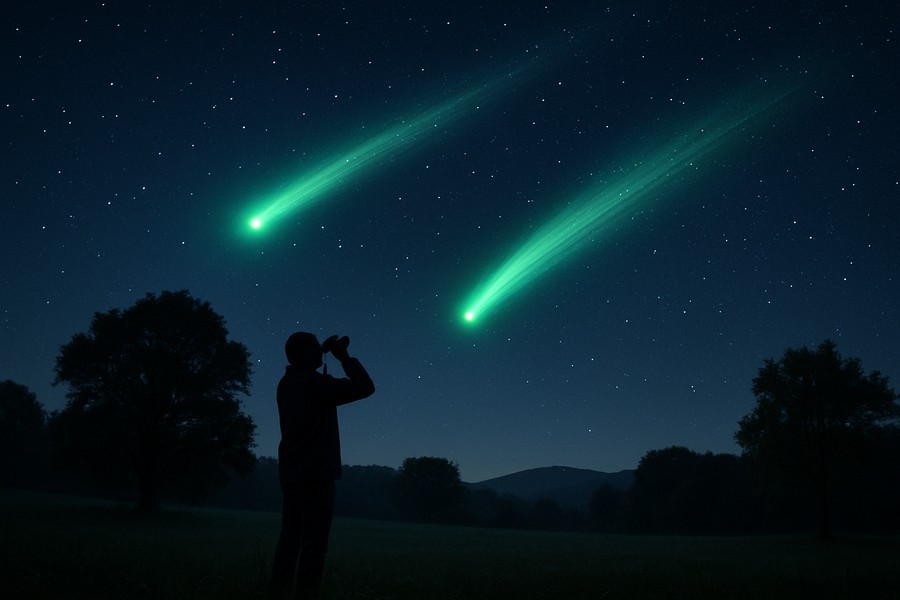
Rare Glimpse of Two Green Comets this Month
This month presents a unique opportunity for stargazers as two green-tinted comets pass through our solar system. These beautiful celestial bodies are now visible from the Northern Hemisphere as their orbits bring them in close proximity to Earth.
Such an occurrence, where two comets grace our skies within the same month, is quite rare. These extraordinary interstellar travelers can be seen using binoculars or small telescopes until the end of this month. When one of the comets reaches its closest point to Earth, it could even be visible to the naked eye.
First Sightings
Some lucky individuals have already managed to spot these icy voyagers. A junior lecturer from Belgium, who is also an avid astrophotographer, was able to capture a stunning image of one of the comets. The image vividly depicts the comet's striking emerald glow and long tail, a sight that has left many in awe.
The faint green hue of these comets is attributed to the presence of carbon in the gas cloud surrounding the comet’s core.
When to Look
For those in the Northern Hemisphere, the next few days represent the best chance to spot the comets. One of them will be visible near the Big Dipper before sunrise. Stargazers are advised to look towards the northeast in the hours before dawn, slightly below the constellation of the Big Dipper.
In about a week's time, the comet will be visible in the evening sky, rising in the west. Through the end of the month, it might be possible to spot this comet with the naked eye, although these elusive celestial bodies can be challenging to find.
The second comet can be viewed in the evening sky throughout the month. The optimal time to spot it is approximately 90 minutes after sunset, facing southwest. This comet may not be bright enough to see with the naked eye, so binoculars or a small telescope will be necessary.
Best Conditions for Viewing
In the coming days, the second comet will appear higher on the horizon after sunset and may increase in brightness as it approaches its closest point to Earth. Under ideal conditions - clear weather, dark skies, and minimal light pollution - it might even be possible to see both comets on the same night towards the end of the month.
Astounding Discoveries
The discovery of these comets is as fascinating as their journey. The first comet was spotted in January by a survey that tracks near-Earth objects using telescopes situated in the mountains of Arizona.
The second comet's discovery was even more recent. An amateur astronomer found it in early September while examining images from a space-based observatory launched in 1995 on a mission to study the sun.
